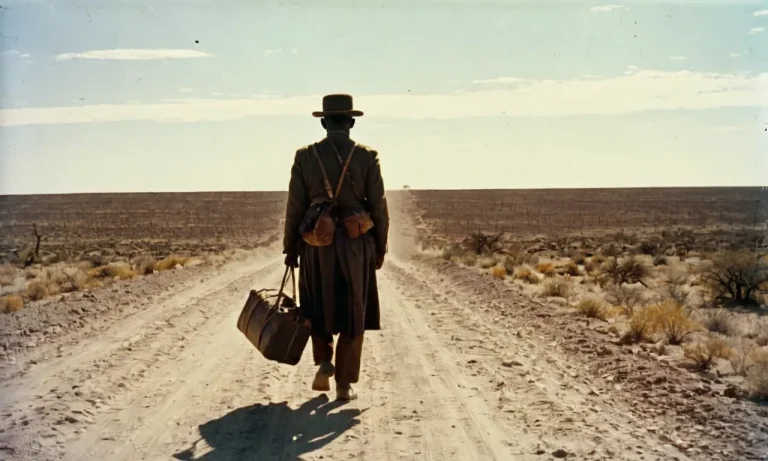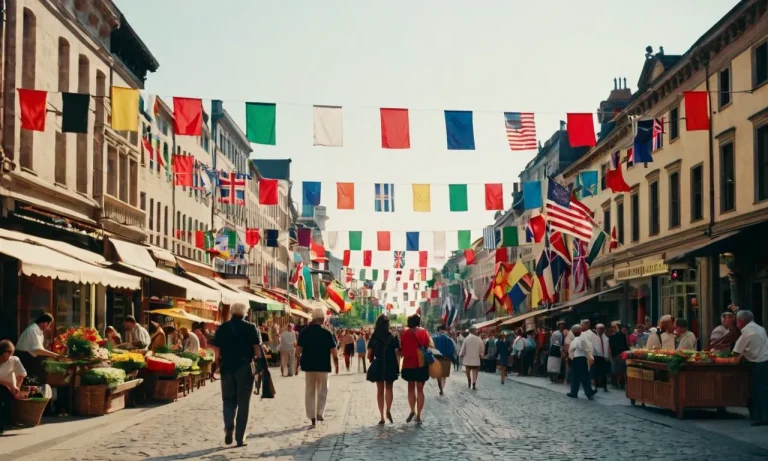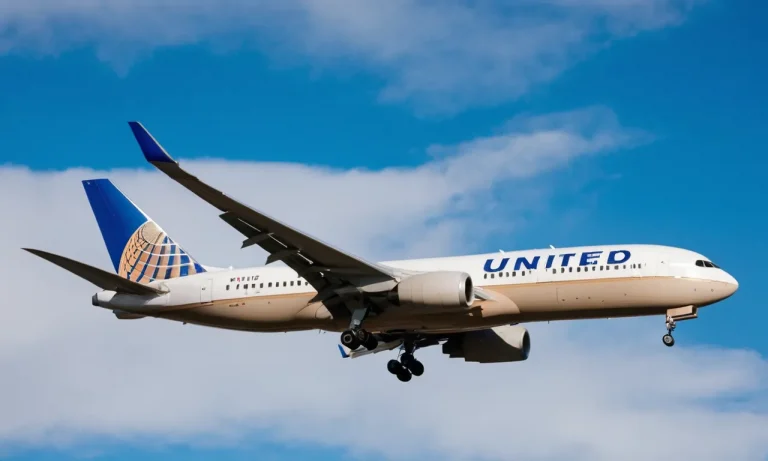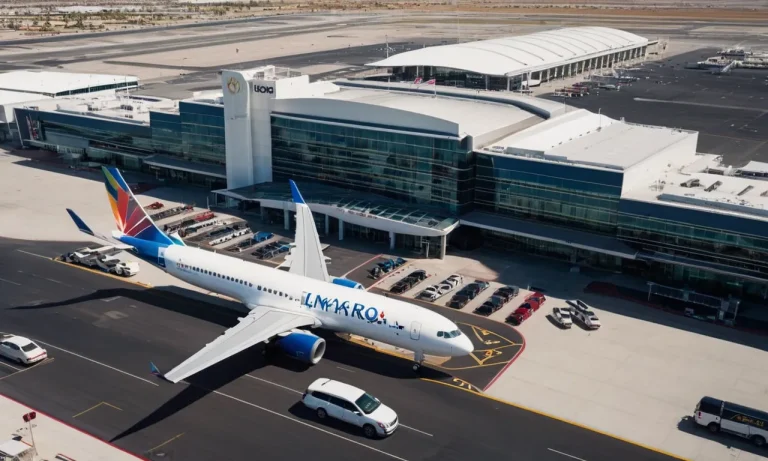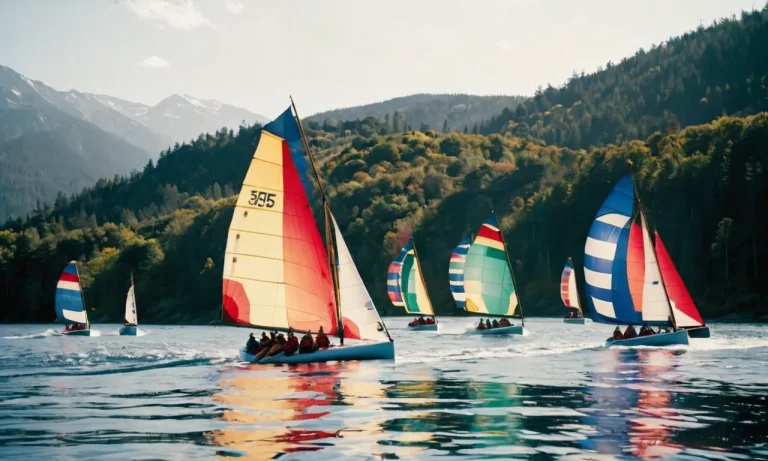Is The Dutton Family From Yellowstone Real?
The Dutton family, led by patriarch John Dutton played by Kevin Costner, has captivated audiences with their old-fashioned cowboy ways and battles to preserve their family ranch on the hit drama Yellowstone.
If you can’t get enough of their cowboy hats and western adventures, you may be wondering – is the Dutton family real?
If you’re short on time, here’s a quick answer: While the Duttons themselves are fictional characters, they and their ranch are loosely inspired by real Montana ranching families and the challenges they face in the modern world.
In this nearly 3000 word article, we will explore the connections between the fictional Yellowstone ranch and real Montana ranches. We cover the history behind Montana ranching dynasties, what real ranch life is like for modern Montana cowboys, and whether dynasties like the Dutton empire could plausibly exist today given economic and land use changes in the western United States.
The Fictional Legacy of the Yellowstone Ranch
The Dutton family from the hit TV show Yellowstone has captured the hearts of viewers around the world. But is their story based on real-life events? As much as fans would like to believe that the Duttons and their Yellowstone Ranch are real, the truth is that they are purely fictional creations.
A generations-old ranching empire
In the world of Yellowstone, the Dutton family is portrayed as the owners of a vast and prosperous ranching empire. Passed down through generations, the Yellowstone Ranch represents a legacy of hard work, dedication, and a deep connection to the land.
Although the Duttons and their ranch are not real, the show’s creators have done an incredible job of portraying the challenges and triumphs of ranch life. From the breathtaking landscapes to the intricate family dynamics, Yellowstone offers viewers a glimpse into a world that may not exist in reality but feels authentic nonetheless.
Fighting to preserve their land and cowboy way of life
One of the central storylines in Yellowstone revolves around the Duttons’ fight to preserve their land and the cowboy way of life in the face of external threats. Whether it’s battling developers, dealing with political pressure, or navigating conflicts with neighboring Native American tribes, the Duttons are portrayed as fierce protectors of their heritage.
While the struggles faced by the Duttons may not be real, they reflect the challenges that many real-life ranchers and landowners face. From land encroachment to environmental concerns, the fight to preserve agricultural and rural traditions is an ongoing battle for many families across the country.
It is important to remember that Yellowstone is a work of fiction and should be enjoyed as such. However, the show’s portrayal of the Dutton family and their commitment to their land and way of life resonates with viewers because it taps into universal themes of family, legacy, and the importance of preserving our roots.
For more information on the real challenges faced by ranchers and landowners, you can visit websites such as American Cowboy or National Rural for a deeper understanding of the issues at hand.
Real Montana Cattle Ranching Dynasties
Montana is known for its vast open spaces, breathtaking landscapes, and rich history of cattle ranching. Many families have built dynasties through their dedication and hard work in the ranching industry. One such family is the Dutton family from the hit TV show Yellowstone.
While the Dutton family may be fictional, there are real-life Montana cattle ranching dynasties that have stood the test of time.
History of large family-owned Montana ranches
Montana has a long history of large family-owned ranches that have been passed down through generations. These ranches have played a significant role in shaping the state’s economy and culture. Some of the most well-known Montana ranching families include the Drummond family of the Drummond Ranch, the O’Connor family of the O’Connor Ranch, and the Wibaux family of the Wibaux Ranch.
The Drummond family, who inspired the popular Pioneer Woman brand, has been ranching in Montana for over a century. Their ranch spans thousands of acres and is home to a thriving cattle operation. The O’Connor family has also been in the ranching business for generations and is known for their commitment to sustainable ranching practices.
The Wibaux family, on the other hand, has a rich history dating back to the late 1800s and played a crucial role in the development of Montana’s cattle industry.
These families have not only built successful ranching operations but have also made significant contributions to their communities. They have created jobs, supported local businesses, and preserved the traditional way of life in Montana.
The challenges of passing on a ranch through generations
While owning a large family ranch in Montana may seem idyllic, it comes with its own set of challenges, especially when it comes to passing the ranch down through generations. One of the main challenges is ensuring the financial stability of the ranch.
Ranching requires significant investments in land, livestock, and equipment, and it can be difficult to maintain profitability over time.
Another challenge is managing family dynamics and succession planning. Deciding who will take over the ranch and how it will be divided among family members can lead to tension and conflict. It’s important for ranching families to have open and honest communication about their plans for the future and to involve all family members in the decision-making process.
Additionally, ranching is a demanding and physically challenging occupation. It requires long hours of hard work, often in harsh weather conditions. Finding the next generation of ranchers who are willing and able to carry on the family legacy can be a daunting task.
Despite these challenges, many Montana ranching families have successfully passed down their ranches through generations. They have adapted to changes in the industry, embraced new technologies, and found innovative ways to keep their ranches thriving.
For more information on Montana cattle ranching dynasties, you can visit websites such as Montana Ranch Group or Big Sky Fishing.
How Realistic is the Yellowstone Ranch?
Yellowstone, the popular television series, has captivated audiences with its gripping storyline and stunning Montana backdrop. One of the key elements of the show is the Dutton family’s sprawling Yellowstone Ranch. But just how realistic is this depiction of a modern-day ranch in Montana?
Could a ranch this size still exist today?
The size and scale of the Yellowstone Ranch may seem larger than life, but it’s not entirely out of the realm of possibility. While it’s true that many modern-day ranches have become smaller and more efficient, there are still some large-scale operations that exist today.
These ranches often require a significant amount of land to support their operations, and while they may be fewer in number, they do exist.
According to the United States Department of Agriculture, the average size of a cattle ranch in the United States is around 442 acres. However, there are some ranches that span thousands or even tens of thousands of acres.
These larger ranches often have multiple enterprises, such as beef cattle, crops, and even tourism, to help sustain their operations.
Realities of contemporary Montana ranching life
While Yellowstone showcases the grandeur and beauty of Montana ranching life, it’s important to remember that running a ranch is not without its challenges. Ranchers face a multitude of hurdles, including unpredictable weather conditions, fluctuating market prices, and the need to adapt to changing agricultural practices.
Contemporary Montana ranching life involves a delicate balance of traditional practices and modern techniques. Ranchers must be well-versed in livestock management, grazing practices, and environmental stewardship.
They also need to have a strong understanding of business and financial management to ensure the long-term sustainability of their operations.
Additionally, ranching is not just a job; it’s a way of life. Ranchers often work long hours, sacrificing personal time and enduring physical labor to keep their operations running smoothly. It requires a deep passion for the land and a commitment to preserving the ranching heritage for future generations.
So, while the Yellowstone Ranch may be a fictional creation, it does provide a glimpse into the realities of contemporary Montana ranching life. It showcases the dedication and resilience of those who choose to make a living on the land, and reminds us of the challenges and rewards that come with running a ranch.
The Connection to Real Montana Ranches
When watching the hit television series Yellowstone, many viewers wonder if the Dutton family and their sprawling ranch are based on a real-life counterpart. While the characters and storyline are fictional, the show draws inspiration from the rich history of Montana ranching dynasties.
Inspiration drawn from Montana ranching dynasties
The creators of Yellowstone have openly acknowledged that their inspiration for the Dutton family came from the real-life ranching dynasties that have thrived in Montana for generations. These families, such as the Kleinsassers, Metcalfs, and Mannixes, have built successful ranching empires and have faced their fair share of challenges and struggles along the way.
Just like the Duttons, these real Montana ranching families have had to navigate the complexities of land ownership, wildlife conflicts, and economic pressures. Their stories of resilience, determination, and love for the land have become a rich source of material for the show’s writers.
Parallels between the Dutton struggles and real rancher challenges
While the Dutton family’s story is fictional, it does mirror some of the challenges faced by real ranchers in Montana. The show accurately depicts the constant battle to protect their land from developers, maintain their way of life in the face of changing times, and deal with wildlife management issues.
Real ranchers often find themselves in similar situations, fighting to preserve their ranches against encroaching development and battling with government agencies to find a balance between conservation and economic sustainability.
The struggles portrayed in Yellowstone serve as a reminder of the real-life challenges faced by Montana ranchers.
The show also highlights the deep connection that ranchers have with their land and the importance of passing down the ranching legacy to future generations. This intergenerational commitment to the land is a shared value among real ranching families, who understand the importance of preserving their way of life for the future.
Conclusion
While the Dutton family of Montana is entirely fictional, fans may be surprised to learn how much their story reflects the real lives of ranchers in Montana and other western states. The Dutton’s multi-generational ranching legacy hearkens back to the glory days of massive family-owned cattle empires.
Yet their struggles to survive against land developers and shifting economic realities are all too common these days.
Montana ranching families have battled for generations to keep land and a fading cowboy way of life intact against the winds of change. The Dutton’s tale pays homage to the triumphs and trials of these real ranching dynasties and cowboys that once defined the American West.



